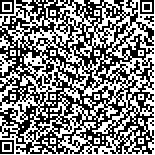| 本文已被:浏览 2348次 下载 2206次 |

码上扫一扫! |
|
|
| 室内刺参育苗池中新发现的一种敌害生物——日本毛壶 |
|
荣小军1, 廖梅杰1, 李 彬1, 孟繁林1,2, 王 岚1, 张 正1, 王印庚1, 刘晓收3
|
|
1.中国水产科学研究院 黄海水产研究所, 农业部海洋渔业可持续发展重点实验室;2.大连海洋大学;3.中国海洋大学海洋生命学院
|
|
| 摘要: |
| 刺参(Apostichopus japonicus Selenka)育苗池内PVC 波纹板上新发现一种敌害生物——日本毛壶(Grantia nipponica), 外观白色管状, 体基端呈树枝状, 中部膨大, 表面遍生毛状骨针, 活体长8~30 mm,宽2~6 mm。体表骨针为二辐骨针(diactine)和三辐骨针(trciactine), 其中三辐骨针(trciactine)中包含了等角骨针(regular spicule)、羽状骨针(sagtittal spicule)和类羽状骨针(parasagittal spicule), 二辐骨针的长度大约为80~800 μm, 三辐骨针的长度为30~350 μm。毛壶大量繁殖的密度可达到0.144 个/cm2。可从养殖用水过滤、饵料消毒和附着基及时清洗几个方面入手控制毛壶的过度增殖。 |
| 关键词: 海参 日本毛壶(Grantia nipponica) 形态学 组织学 分类 敌害 |
| DOI:10.11759/hykx20130630001 |
| 分类号: |
| 基金项目:科研院所技术开发研究专项(2011EG34219); 山东省农业良种工程重大课题 |
|
| A new harmful organism found in Apostichopus japonicus indoor breeding seeding-Grantia nipponica |
|
|
| Abstract: |
| The specimens of genus Grantia nipponica were obtained from the PVC attachment base of sea cucumber Apostichopus japonicus indoor breeding pool on 16th June, 2012. The taxonomic characteristics of G. nipponica were described in detail. The body of G. nipponica is white and fistulose. The base of the organism is arborescent. The central body is inflated which is covered with a lot of hairy dermalia. The length of single G. nipponica is about 8~30mm and the body width is 2~6mm. There are two kinds of dermalia-diactine and trciactine in its body. Trciactine include three kinds of spicule: regular spicule, sagtittal spicule and parasagittal spicule. The length of diactine and trciactine is about 80-800μm and 30-350μm respectively. The results show that the average density of G. nipponica in PVC Plate can reach a value of 0.144 individuals per cm2, which is harmful to culture of young A. stichopus. The effective methods to control the density of G. nipponica are filtering water by sand filter, sterilizing feed and washing the PVC attachment basement regularly. |
| Key words: sea cucumber Grantia nipponica morphology histology taxonomy harmful organism |
